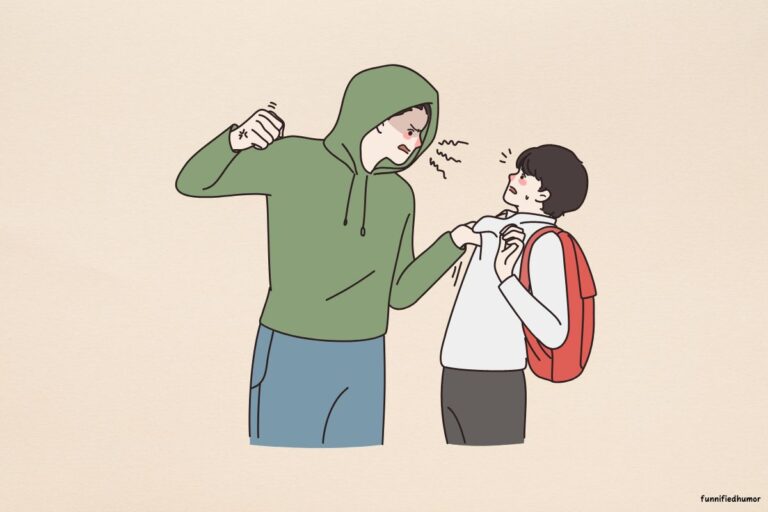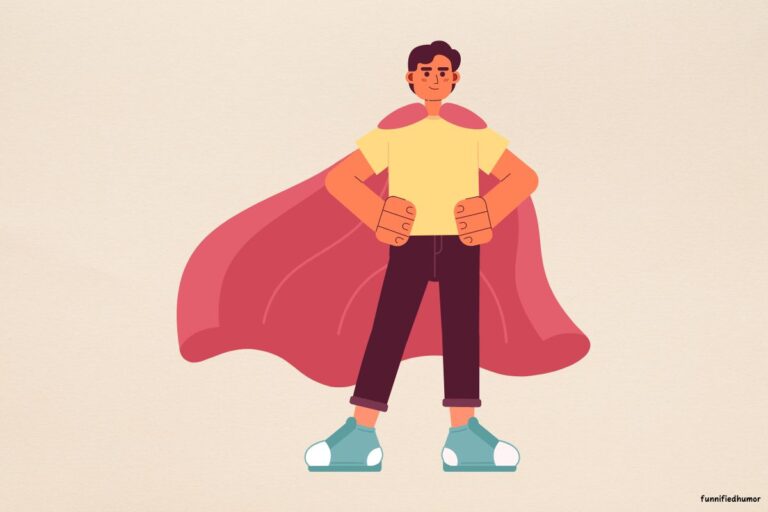4 Short Stories about Culture and Identity

Each one of us, whether consciously or unconsciously, like to weave stories that stem from our roots, our experiences, and the places we call home.
These narratives are more than mere tales; they are reflections of who we are, the cultures we belong to, and the identities we embrace.
Embark on a journey with me, as we delve into a world illuminated by mesmerizing short stories about culture and identity. These tales will not only captivate your heart but also paint vivid pictures of diverse worlds, bridging the gap between the known and the unknown.
So, grab a cup of your favorite brew, get comfortable, and let’s traverse through the echoing whispers of tales that have been, tales that are, and tales yet to be told.
Stories about Culture and Identity
1. The Patchwork of Unity
In the bustling heart of Metroville, children from all corners of the world attended Elmsworth Primary. With the city’s towering skyscrapers on one side and the historic districts on the other, Elmsworth was a blend of the modern and the traditional. This year, the school had decided on a special project for the children of Grade 5: the Unity Quilt.
As Mrs. Daniels, the class teacher, explained the project, the room buzzed with excitement. “Each of you will contribute a patch that represents your culture. We’ll then stitch all these patches together to form a quilt that represents all of us.”
Ravi raised his hand, “My mom has sarees with beautiful Indian designs. Can I use that for my patch?”
“That sounds wonderful, Ravi,” Mrs. Daniels smiled.
In the back, there was whispering. A tall boy with blond hair, named Jake, mumbled to his friend, “I don’t see why I have to do this. American culture is already everywhere.”
Beside him, Mei Ling, a girl with long black hair and glasses, hesitated before speaking, “I’m not sure what to pick. Chinese culture is so vast.”
One day, the children decided to work on their patches during lunch. Liyana, from Nigeria, started showing her brightly colored Ankara fabric. “This pattern tells the story of a famous Yoruba legend,” she explained.
“Wow, that’s so vibrant!” exclaimed Maria, from Mexico. “I have brought some fabric from my grandmother’s old dress. It has patterns that remind me of Dia de los Muertos.”
As the days progressed, the classroom became a melting pot of stories and colors. Children played music from their countries, danced, and sometimes even brought food.
“Try this!” Ravi exclaimed one day, holding out a box of samosas. “It’s a popular snack from India.”
Jake, usually dismissive, tried one hesitantly and his eyes widened in surprise. “This is actually good!”
One day, as Mei Ling was carefully stitching a dragon onto her patch, Jake came over, looking curious. “Why a dragon?”
“In Chinese culture, dragons are symbols of power, strength, and good fortune,” Mei Ling replied. “My grandmother used to tell me stories of dragons when I was younger.”
Jake seemed to ponder this. “You know, all I thought about China before was that it had a lot of people and the Great Wall. But there’s so much more, isn’t there?”
Mei Ling smiled, “Every culture has its depths, Jake. Even yours.”
As the days turned into weeks, the children’s patches grew more elaborate. They became more than just pieces of fabric; they became stories, memories, and tokens of pride. Even Jake, who started out resistant, brought a patch with an intricate design of the American bald eagle.
On the day the quilt was completed, the children looked at their masterpiece in awe. The vivid colors and intricate patterns of each patch came together harmoniously, each one shining in its own unique way.
Mrs. Daniels addressed the class, her voice filled with emotion. “Children, what you’ve created here is not just a quilt. It’s a testament to the fact that when diverse elements come together with respect and understanding, they create something truly beautiful.”
The Unity Quilt was displayed at the city museum, and on its inauguration day, the children of Grade 5 stood proudly beside it, watching as visitors from different backgrounds admired their collective work.
An elderly woman approached Jake, pointing at the quilt. “Is this your work?” she asked.
Jake nodded, pointing to his eagle patch. “That’s mine. But it wouldn’t be complete without all the others.”
The woman smiled, “Unity in diversity. That’s what makes this city, and our world, beautiful.”
And as Jake looked at his classmates, he realized he had not only been a part of a school project but also a life lesson he would never forget.

2. Language of the Heart
The sun cast its golden glow upon the streets of the small town where Nina and Jai lived. Rows of houses stood side by side, looking identical in structure but distinct in character. At the end of the row were the homes of Nina’s and Jai’s families. Nina hailed from a Greek background, while Jai’s family was Indian. Their houses faced each other, and so did the vibrant colors of the Greek flag and the tricolor of India, waving gently in the breeze.
Nina and Jai, both 12, were inseparable. They had grown up together, sharing toys, secrets, and dreams. Despite the language barriers of their families, the children communicated fluently in the universal language of friendship.
One sunny morning, Mrs. Papadopoulos was hanging her laundry when a ball accidentally bounced into her garden, knocking over a vase.
“Jai!” Mrs. Rajan called out, her voice laced with a touch of annoyance. “How many times do I have to tell you to be careful?”
Nina’s mother hurried over, her Greek rapid and animated. “This was a gift from my grandmother!”
Mrs. Rajan tried to respond in Hindi, but the message got lost in translation. Words tangled and twisted, escalating a simple accident into what seemed like a feud.
Nina and Jai watched, their hearts heavy.
“We need to fix this,” whispered Nina. “They just don’t understand each other.”
Jai nodded. “Language. It’s so complicated. We need a new one. One that everyone can understand.”
Together, they hatched a plan. They spent days sketching symbols, crafting gestures, and inventing sounds. They called it “HeartSpeak”.
One evening, they invited both families to the garden. With trepidation, the adults sat opposite each other.
Nina began, “In HeartSpeak, this,” she drew a heart with her fingers, “means love.”
Jai clapped his hands together, “This means unity.”
For hours, the children narrated tales from their histories. Nina spoke of Hercules and his struggles, using gestures to signify strength and determination. Jai mimed the story of Rama and Sita, using sounds to highlight loyalty and love. Through HeartSpeak, they illustrated that heroes from different lands shared the same values.
Mrs. Papadopoulos wiped away a tear when Jai gestured the symbol for sacrifice, understanding the parallels between the story of Icarus and that of Abhimanyu from the Mahabharata.
Mr. Rajan laughed heartily as Nina acted out the antics of Dionysus, seeing the humor shared between cultures.
By nightfall, both families were miming, clapping, and drawing symbols in the air, understanding and appreciating stories from a culture once foreign to them.
“It’s not the words that matter,” Mrs. Rajan said, gesturing the HeartSpeak sign for unity.
“It’s the heart,” Mrs. Papadopoulos replied, pressing her hand to her chest.
Inspired by the children’s efforts, the community organized a cultural exchange evening. Greek music blended with the beats of Bollywood. Souvlaki was served alongside samosas. Stories from distant lands echoed in HeartSpeak, binding hearts and bridging divides.
Nina and Jai stood hand in hand, watching their families dance together. They had not only reconciled two households but had also united an entire community. They realized the most profound languages aren’t spoken; they’re felt. And in the language of the heart, everyone is fluent.

3. Dancing on the Edge of Tradition
The village of Zalya was nestled between two green hills, secluded and undisturbed for centuries. The air was always thick with the scent of blooming flowers and echoed with the melodious chirping of birds. The community was closely-knit, bound by traditions that ran deeper than the roots of the ancient Banyan tree that stood in the village center.
Amara was a passionate dancer, and from an early age, she had trained in the sacred dance of Zalya, an art passed down for generations. The dance was fluid and graceful, reminiscent of the movement of water through the village’s clear streams. It was believed that the dance had the power to appease the gods and bring prosperity to the village. But there was one strict rule: it was forbidden to be performed outside Zalya.
One evening, as the sun bathed the hills in gold, Amara practiced her steps under the Banyan tree. Her grandmother, Naya, watched from a distance, a hint of pride in her eyes.
“Your moves are beautiful,” Naya remarked, coming closer. “Your mother would’ve been proud.”
Amara stopped and hugged her grandmother. “Thank you, Nani. I just wish I could show the world how beautiful our dance is.”
Naya’s face turned stern. “The dance isn’t just an art, Amara. It’s a sacred gift, and we must protect it.”
Amara nodded, but her heart was restless. As months went by, an international cultural festival was announced in the nearby city, inviting performances from all over the world. Many encouraged Amara to participate.
Her friend Lila approached her one day, excitement in her eyes. “Amara, this is your chance! The world needs to see the beauty of Zalya.”
But Amara was torn. “The elders won’t approve, Lila. The dance is forbidden outside our village.”
Lila sighed, “I understand, but imagine the recognition our small village would get!”
Word spread and soon the entire village was buzzing with anticipation. The village chief, Bala, called for a council meeting. The elders sat around the Banyan tree, discussing Amara’s proposal.
“It’s a risk,” said one elder, shaking his head. “Our traditions could be mocked or misinterpreted.”
Bala nodded, “But it’s also an opportunity for Zalya to be known. We’ve been secluded for so long.”
Amara stood before them. “I promise I won’t let our culture be diluted. I’ve thought of a way to maintain the sanctity of our dance.”
The room was silent, waiting for her explanation.
“I will modify the dance,” Amara continued, “capturing its essence but not revealing the sacred steps. The world will see its beauty, but its true heart will remain only with us.”
The elders whispered amongst themselves. Bala finally spoke, “We trust you, Amara. Represent Zalya and make us proud.”
The day of the festival arrived. The grand stage was filled with brilliant colors and sounds from various cultures. Amara stood backstage, nerves battling with excitement.
Lila squeezed her hand. “You’ve got this. Show them Zalya’s heart.”
As the music began, Amara gracefully took the stage. The audience was spellbound by the captivating blend of familiar dance moves interwoven with the unique spirit of Zalya. As she concluded, the applause was thunderous.
After her performance, people from all over came to know about the hidden village of Zalya and its rich traditions. They respected the village’s choice to keep certain aspects of their culture private while appreciating the glimpse they had been given.
Back in Zalya, Amara was greeted with a hero’s welcome. The village celebrated their newfound recognition but also cherished the fact that their most sacred tradition remained untouched.
Years later, young children of Zalya would dance under the same Banyan tree, with stories of Amara’s courage and the day the world got a glimpse of their culture, but not its entire soul.
Naya, now even older, would often recall that day with tears of pride. “You showed them the beauty of Zalya without giving everything away,” she would tell Amara. “And in doing so, you protected our heart.”
Amara’s journey was a testament to the delicate balance between sharing and preserving cultural treasures. And her story became a legend in Zalya, passed down for generations to come.

4. The Library of Babel’s Last Book
In the bustling city of Narratoria, the Library of Babel stood tall, its vast archives holding stories from every corner of the world. Scholars, historians, and storytellers traveled from distant lands to research, recite, and revel in the rich tapestry of human history and imagination contained within its walls. However, among the innumerable tales, there existed a haunting void – the legend of the missing book.
“I’ve heard there’s a book that no one’s ever read,” Mia said one day, as she and Leo reclined on the lush lawns outside the library.
Leo raised an eyebrow, his hazel eyes shining with interest. “A book in the Library of Babel that no one’s read? Impossible.”
Mia grinned mischievously. “That’s because it’s missing.”
And thus began the duo’s quest, one that would take them on a whirlwind journey through Narratoria, mingling with diverse representatives of myriad cultures, each holding a piece of the puzzle.
One afternoon, in the Egyptian wing of the library, they approached Mrs. Anouk, a stern-looking elderly woman known for her vast knowledge about hieroglyphs and ancient rituals.
“Mrs. Anouk,” Leo began cautiously, “We’ve heard tales of a missing book, one that tells the story of a forgotten culture.”
She stared at them for a long moment before replying, “Ah, the Vanished Culture. Legends speak of it, though few believe. To find it, you must first understand the culture that surrounds you. What do you see when you look at these hieroglyphs?”
Mia squinted, “Stories of gods, pharaohs, and their grand deeds.”
Mrs. Anouk nodded, “Yes, but also stories of common folk, their hopes, fears, and dreams. The lost book you seek tells the tale of an entire culture. Understand the essence of these stories, and you’ll find your first clue.”
Days turned into weeks, and the young detectives delved deep into various cultures, sharing meals with the Maasai warriors, dancing with Spanish flamenco artists, and reciting poetry with Iranian scholars. Each experience brought them closer to the soul of the missing culture.
One evening, while dining with Mr. Cho in Narratoria’s bustling Chinatown, Mia commented, “It’s incredible how each story, each meal, and dance tells us so much about its people’s identity.”
Mr. Cho smiled knowingly, “And yet, there’s one that remains silent. I’ve heard of your quest. Your next clue lies in the land where the sun meets the sea.”
Mia and Leo exchanged glances. “The beach?”
The sun was setting when they arrived at the city’s coastline. An old fisherman, with deep lines on his face, sat mending his net. As they approached, he began to hum a tune, unlike anything they had ever heard.
“That song,” Leo inquired, “where is it from?”
The fisherman looked up, his eyes reflecting the colors of the twilight sky. “It’s from the heart of the sea. The lost culture you seek was known for its music.”
Handing them a delicate seashell, he whispered, “Listen closely.”
As Mia held the shell to her ear, the haunting melody of a forgotten civilization filled her senses. The sound led them to a hidden cove where, buried beneath the sands of time, lay the missing book.
Embossed with intricate patterns and adorned with precious stones, the book was unlike any other. Within its pages lay the stories, dreams, and aspirations of a people who had vanished, leaving no trace except for their tales.
With the book in their hands, Mia and Leo returned to the Library of Babel. A grand ceremony was held, with representatives from every culture in attendance.
As the book was placed in a prime spot, Leo remarked, “It’s not just a book, Mia. It’s the heartbeat of a culture.”
Mia nodded, “And today, we’ve given it a voice.”
The city of Narratoria had learned an invaluable lesson about the richness of identity and the perils of cultural erasure. As stories were shared, and dances celebrated, the essence of the lost culture was restored, reminding everyone of the treasures held within the annals of history.





